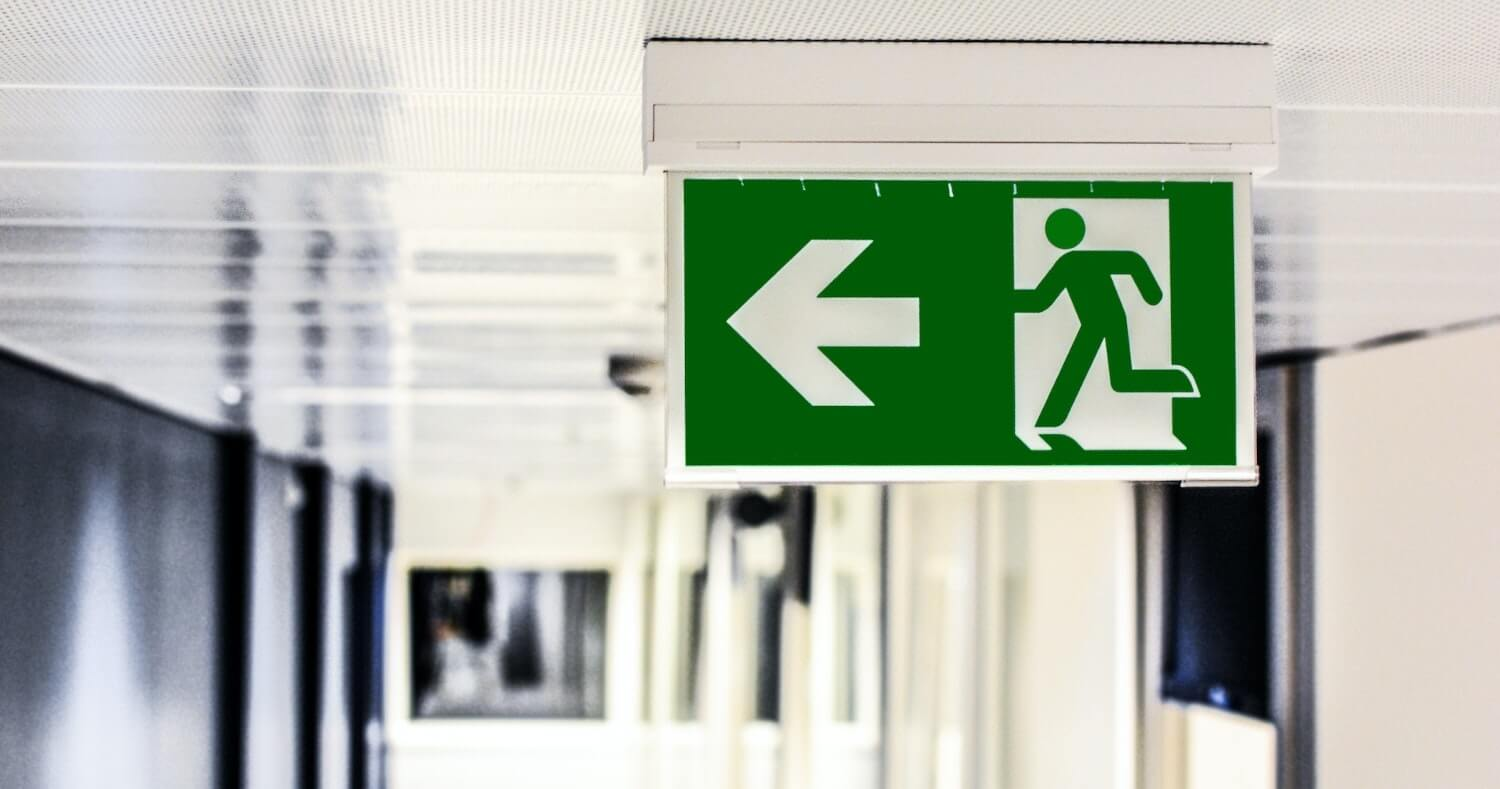Health and safety management is one of the most important aspects of any business. Employers have a duty to keep their people safe and promote a healthy workplace.
According to the Health and Safety Executive, 1.8 million working people are suffering from ill health related to work, so as an employer, it’s important that you try to reduce accidents and prevent work-related mental health issues as much as possible.
In this guide, we’ll go through what health and safety management is, why it’s important and how you can build an effective health and safety policy to keep your staff healthy and reduce safety risks.
What is Health and Safety Management and Why is it Important?
Health and safety management is the act of providing a structured framework for presenting health and safety risks in the workplace. While not required by health and safety law, a health and safety management system can help you keep on top of occupational health issues and focus on continuous improvement, while also putting preventive and protective measures in place to manage risks.
You don’t necessarily need a formal management system in place. You just need to be able to identify, manage and control risks continuously and demonstrate that you have adequate resources to manage health and safety issues.
A good health and safety management system will:
- Reduce documentation: The focus should be less on documented health and safety procedure and more on the human element of risk control
- Establish positive attitudes and behaviours: Your health and safety management system should promote safe behaviours and attitudes among your team, creating a positive safety culture
Health and Safety at Work Act 1974
In 1974, health and safety at work was written into law. This legislation places a legal duty on employers and provides the standard for workplace health, safety and welfare.
The health and safety at work act details employers’ responsibilities, as well as the reasonable expectation of employees.
The Health and Safety at Work Act set out:
- The duty of care of employers toward employees and the public.
- The responsibilities of employees for themselves and others.
- Specific responsibilities of self-employed people for themselves and others.

The Management of Health and Safety at Work Regulations 1999
The Management of Health and Safety at Work Regulations 1999 were introduced to make the Health and Safety Act 1974 more understandable and give employers clear direction on what their obligations are. It’s a legal requirement for any employer with 5 or more employees to follow these regulations, but employees need to take some responsibility for health and safety at work too.
There are 5 key elements to the Health and Safety at Work Regulations that you need to be aware of:
- Risk assessments: You must identify hazards to your team and anyone that could be affected by your work activity. You should also do separate risk assessments for under-18s and new or expectant mothers. Once you’ve completed a risk assessment, you must make arrangements to control the hazards you identified.
- Competent person: You must appoint at least one person to conduct active monitoring of health and safety risks and ensure legal compliance.
- Communication: All employees must be provided with safety information in an easy-to-understand format. You must also provide this information to temporary workers and contractors.
- Training: All individuals must have adequate health and safety training for their role, and workers mustn’t be given tasks that are beyond their physical capabilities or training.
- Employee obligations: All employees should report any health and safety issues or dangerous situations, use any equipment according to their training and make every effort to take care of their own and their colleagues’ safety.
These elements can help you create an outline for your health and safety policy.
Who is Responsible for Health and Safety in the Workplace?
The short answer is everyone has a responsibility when it comes to health and safety at work. And while the primary legal responsibility lies with the employer, everyone has a part to play.
First, it’s worth examining what it means to have a safe working environment. In a nutshell, it means having regular and thorough control of all the risks to your health and safety, including mental and physical health. It also means having suitable washing facilities and bathrooms, access to drinking water, and first aid equipment. Health and safety law mandates that: “All workers are entitled to work in environments where risks to their health and safety are properly controlled”.
So, while the burden of health and safety lies with employers, we all share the responsibility. For many organisations, this will become second nature. A positive culture around health and safety and the application of common sense should take care of the day-to-day around the office. Yet, having those procedures in place from the outset ensures clarity for everyone at work.
Employers’ Responsibilities for Health and Safety
Employees have a legal right to expect their health and safety to be adequately controlled. They also have the right to stop work and leave the work area if they have reasonable concerns about their safety.
In order to maintain a safe environment for employees, employers have the following responsibilities to ensure these rights are preserved:
Carry out risk assessments
Safety at work begins with risk assessments designed to spot any possible health and safety hazards. They must be undertaken by a ‘competent person’ – sometimes an owner or director in smaller organisations, or a nominated health and safety expert in larger firms.
They take two forms, generic and specific. Employers are responsible for both of them. For example, organisations across the globe had to complete generic COVID-19 risk assessments when people returned to work after the pandemic. They also have to conduct risk assessments for pregnant workers or workers handling specific kinds of heavy machinery.
This process should thoroughly examine any potential harm your staff could come to when executing their role in your organisation. It also covers how to eliminate, reduce or control those risks. In a clear and understandable way, it should highlight how your teams are protected and instruct and inform them on how to mitigate risks.
Identify who needs protection
The employer’s responsibility is to assess who needs protection from the hazards outlined in the risk assessment. This goes beyond just full-time employees and covers contractors, freelancers, and part-time workers. It is also the employer’s responsibility to take into consideration the special requirements of people – including anyone with a disability and pregnant women.
Provide health and safety training
This is essential to help teams understand how to keep themselves safe at work. Training provided by employers needs to be free, regular, and accessible to all employees, equipping them with the necessary skills and tools to do their jobs safely.
Give access to health and safety information
Employers are responsible for communicating the risk assessment results to their employees, as well as other health and safety information. The information you provide should cover any health and safety issues in the workplace and how employees are protected. You also need to create a health and safety policy that covers all the procedures in place, including fire safety and first aid.
Don’t forget it is a legal requirement for employers to display a Health and Safety Law poster. Our health and safety law poster free download is available here.
Provide adequate facilities
It goes without saying that drinking water, adequate toilet provisions, fresh air and light are all required employer provisions! Other facilities employers are responsible for include:
- Workstations appropriate for the employees and their work.
- Reasonable temperatures.
- A clean workplace and equipment.
- Enough space to allow easy movement.
It’s also essential to consider spaces for rest breaks and eating meals, including suitable facilities for pregnant women and nursing mothers.
Carry out safety checks
Employers must check that the correct work equipment is provided and properly used and maintained. In offices, this can mean annual PAT tests on electrical devices and ensuring safe walkways, stairs and floors. In other work environments, it can mean taking precautions against the risks caused by flammable or explosive hazards, electrical equipment, noise and radiation.
Employees’ Health and Safety Responsibilities
It’s vital that your teams know their health and safety responsibilities. In fact, it’s part of your responsibility as an employer to ensure they are made aware of their contributions towards a safe working environment.
Although uncommon, individuals can be held liable and be criminally prosecuted for failing in their health and safety duties. While it would be unlikely for that to happen, there are other benefits to taking the appropriate measures to make sure everyone is aware of their responsibilities. This includes fostering trust amongst team members so they can work together in a comfortable and safe work environment.
Here’s an overview of the responsibilities of employees:
Take reasonable care
This means your people are obliged to comply with relevant laws and to take reasonable measures to protect their own safety and health, as well as the safety and health of the people around them.
It’s essential to make accountability clear to individuals in their health and safety training. Champion those taking care of themselves and others and their positive impact on the rest of the business.
Cooperate with their employer on work safety, health and welfare.
People throughout your business should be willing to attend and implement training and guidance. Participation in safety and health training offered by an employer is mandatory.
It is also their responsibility not to engage in any improper conduct that could endanger their own safety or the safety of anyone else. They must correctly use tools and machinery and wear any protective equipment they’ve been provided.
Following training and safety procedures are crucial to minimising risks. This is achieved most effectively when there is cooperation between employees and employers.
To report any faults or issues with health and safety at work
Your teams have a responsibility to report any health and safety concerns to their employers. And although they are ultimately responsible for seeking out someone to report to, it benefits you to have a straightforward process in place. Make expectations clear during training, and ensure your people know where to raise their concerns. This might be a line manager or your dedicated health and safety manager.
Who Should Write a Health and Safety Policy?
Anyone that has a thorough understanding of your business and health and safety can write your policy. If you have an HR team, they may be the best person to write it, while smaller businesses might need to use senior managers or even the director of the company.
The person that writes your policy should:
- Understand the purpose of the business
- Know what’s best for the business
- Understand the business’ capabilities
- Have insight into the challenges facing the business
If they have this knowledge and understand health and safety legislation, they are perfect to write your policy.
The 4 Steps of Health and Safety Management

In any health and safety management system, you’ll find that the key elements come down to the steps Plan, Do, Check, Act. Let’s go through them in more detail:
Plan: During your planning process, you should come up with a flexible policy that can adapt to changing health and safety hazards. You should also ensure that there’s effective communication of any changes to the entire organisation, and include it in your employee handbook.
Do: During this stage, you need to investigate whether there are significant risks in your workplace. Consider what can cause harm, how it could cause harm and how you can manage or prevent that risk. Communicate with your team about potential hazards, and get feedback from them to promote a positive attitude to managing health and safety.
Check: Monitoring performance of your policy is crucial. Check that your assessed risks are being addressed and controlled and review your policies if you need to. Ensure that your team is comfortable with reporting accidents and that incident investigation is carried out for each one.
Act: Review your health and safety management system and check that it’s functioning properly. If you’ve had any accidents reported recently, meet with a safety committee and discuss how you can learn from them. Adapt your policy according to business changes and any incidents that occur to ensure continued effectiveness.
How to Build an Effective Health and Safety Policy
While it might seem overwhelming to build a health and safety policy that will help control risks and prevent future incidents, it’s actually simple as long as you know your business and can identify the hazards. You can write an effective policy in just 5 steps – the Health and Safety Executive states it should cover 3 areas, but we think there are two more that are just as important:
1. Write a statement of intent
Your statement of intent should cover your general policy for health and safety management at work. You should state your commitment to managing health and safety and what your aims are. For example, you may address your occupational health commitments and how you want to create a healthy work environment.
2. Identify who is responsible for health and safety
List all the people that are responsible for safety management. As well as the person that wrote your policy, there may be other people that need to take a bigger role in managing safety risks, such as warehouse managers or mental health first aiders.
3. Show how you will achieve your policy aims

Show the arrangements you’ve made to manage risks and how monitoring arrangements will improve safety in your business. For example, demonstrate that you’ve carried out risk assessments, have provided the correct training to all staff, and you’ve used safety signs where necessary.
4. Specify a review date
It’s important that you show your commitment to safety systems and promoting a healthy workplace by reviewing your policy regularly. It’s best practice to review your policy every year, but if you make any significant changes to your business operations you should review it sooner.
5. Communicate to your team
Communicate any changes to your policy to your entire team. Employ various communication strategies for different individuals or teams to ensure that everyone understands your commitment to safety and health management.
You should also make sure that the most up-to-date version of your policy is in the employee handbook so your team members can refer to it whenever they need to.
So, now you know what health and safety management systems are, what the law is and how to build an effective safety management system and policy, you can get started on writing your own!
Use Factorial’s free health and safety law poster to help you highlight employee and employer responsibilities and give contact details for major incidents.




